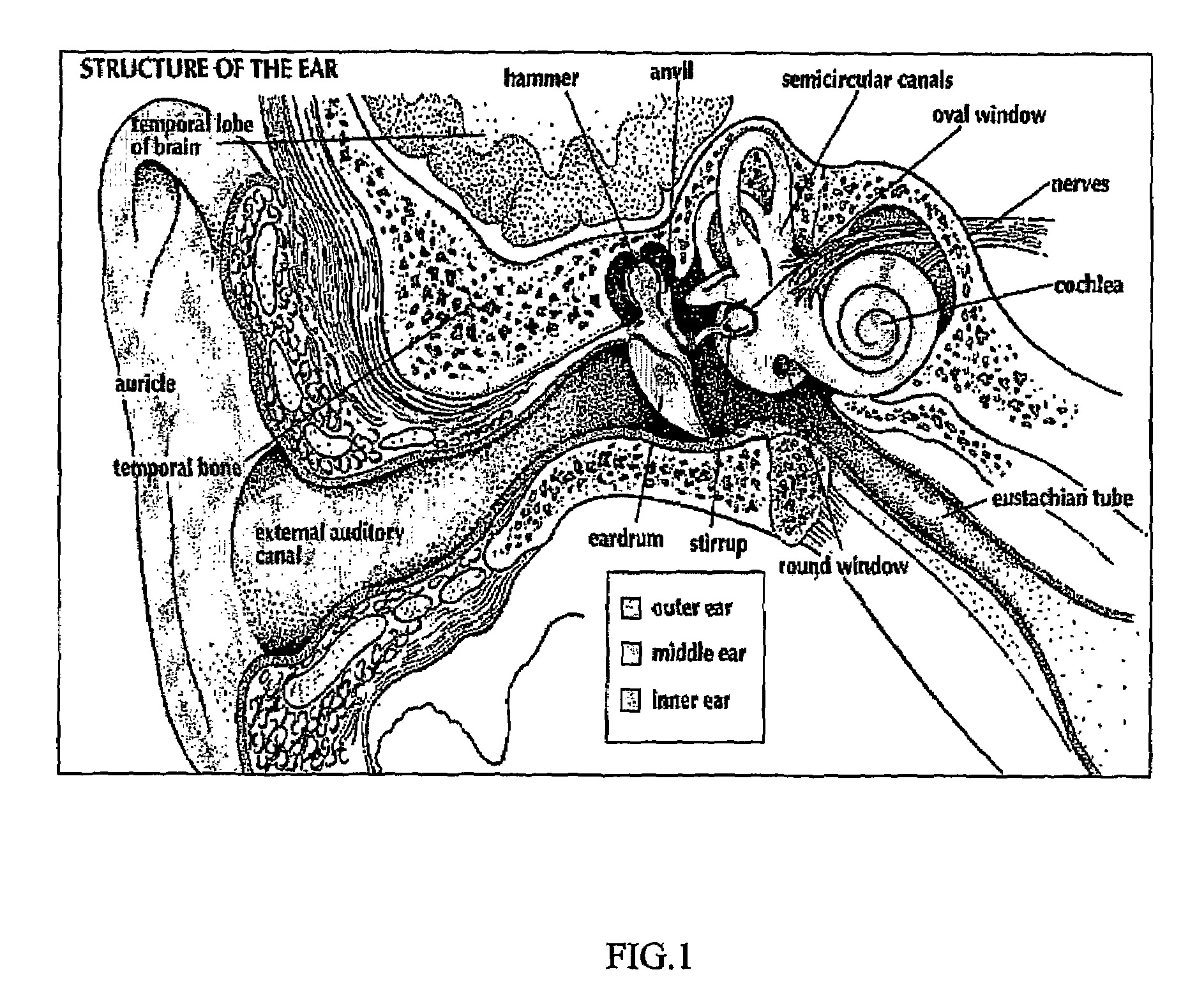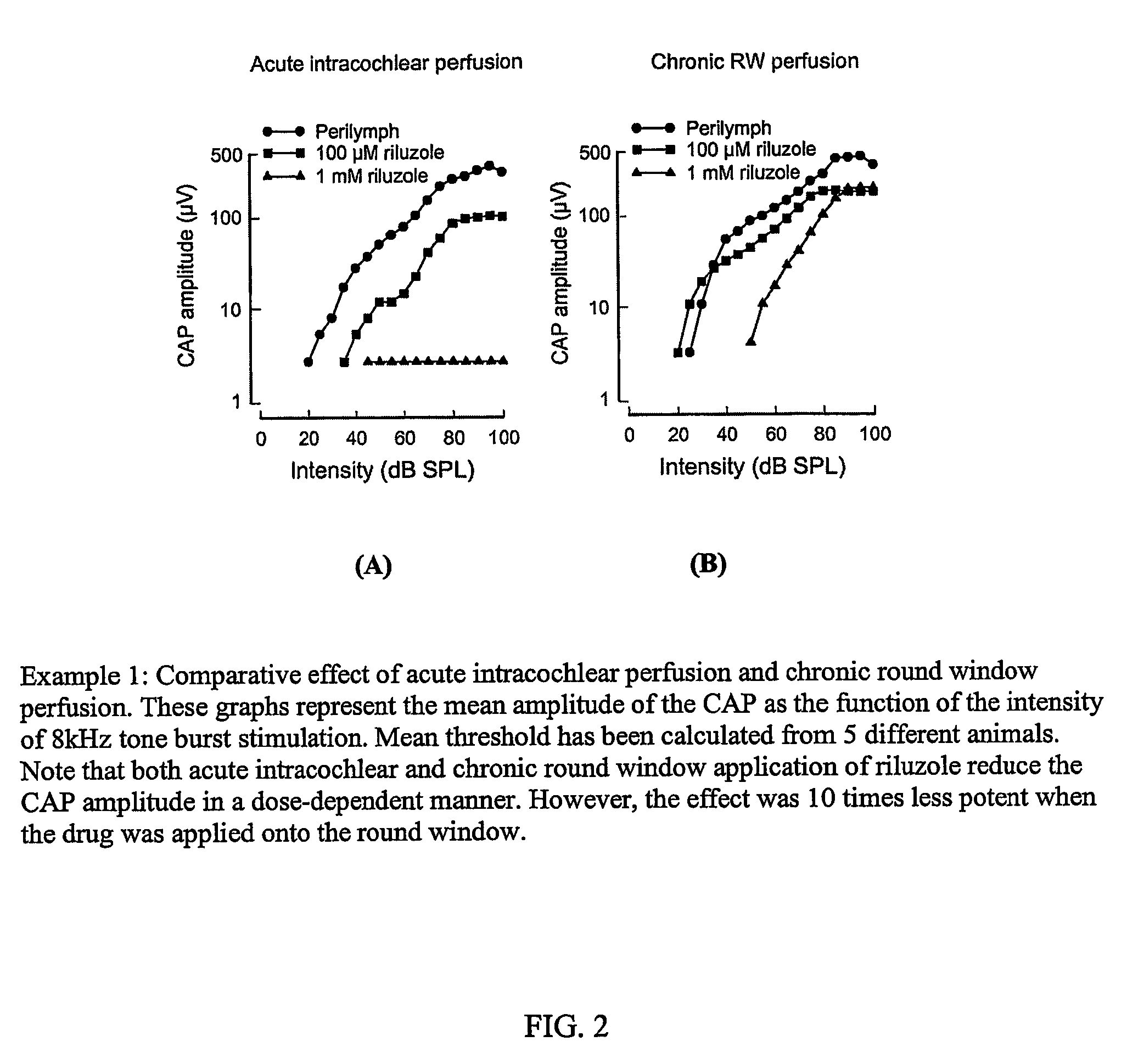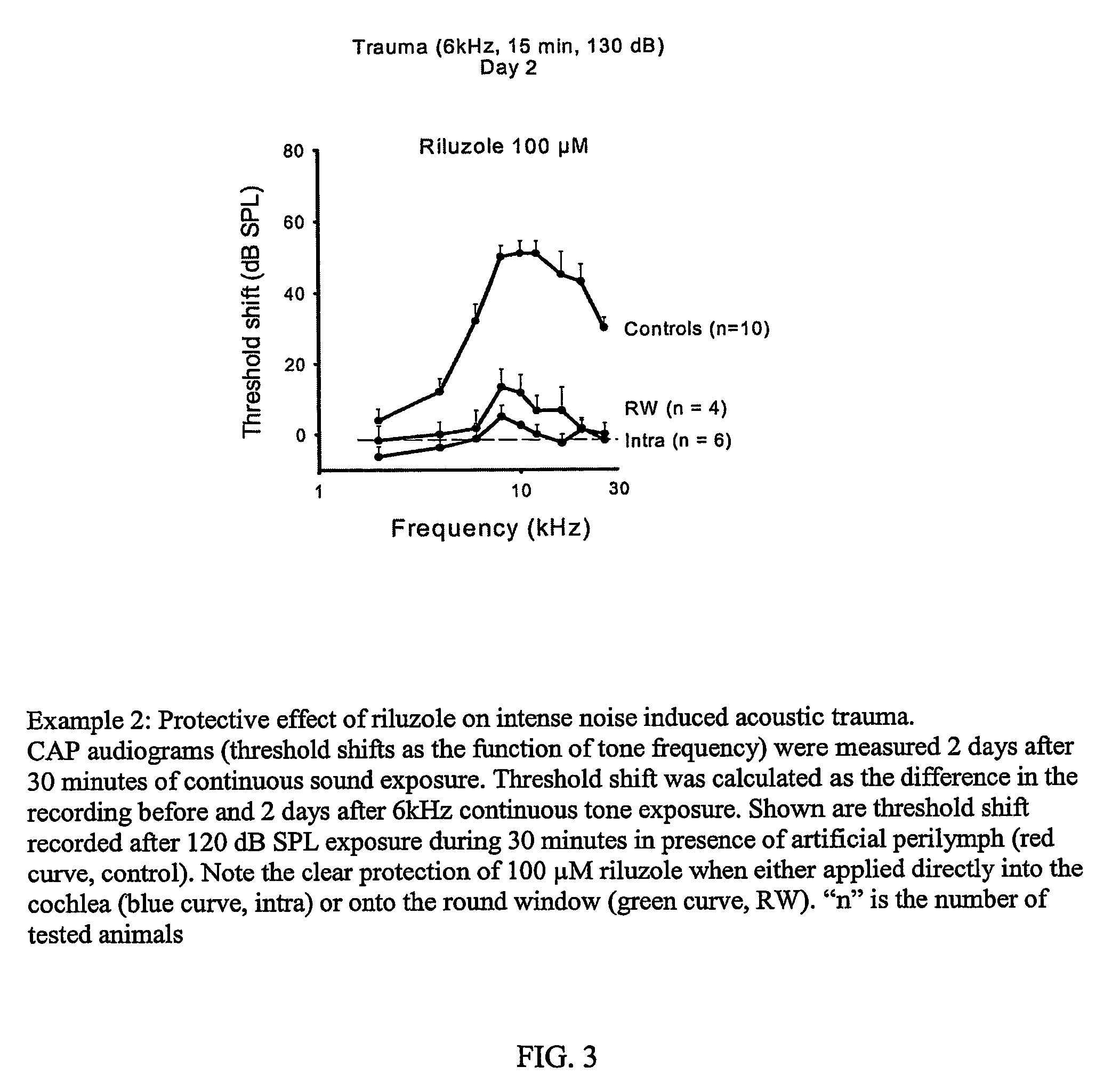Delivery of modulators of glutamate-mediated neurotransmission to the inner ear
a glutamate-mediated neurotransmission and modulator technology, applied in the direction of biocide, drug composition, peptide/protein ingredients, etc., can solve the problems of permanent damage that is not currently treatable, adversely affect the quality of life of millions, temporary or permanent hearing loss, etc., to avoid potential toxicity and side effects, less toxic effect, and increase patient complian
- Summary
- Abstract
- Description
- Claims
- Application Information
AI Technical Summary
Benefits of technology
Problems solved by technology
Method used
Image
Examples
example 1
The Comparative Effect of Acute Intracochlear Perfusion and Chronic Round Window Perfusion of Riluzole
[0134]Because acute intracochlear perfusion (AICP) is not practical in humans, the inventors investigated whether a safe and therapeutic effect could be achieved via round window choclear perfusion (RWCP).
[0135]The comparative effect of acute intracochlear perfusion and chronic round window perfusion was investigated. Results are shown in FIG. 2, in which the graphs represent the mean amplitude of the CAP as the function of the intensity of 8 kHz tone burst stimulation. Mean threshold was calculated from 5 different animals. Note that both acute intracochlear and chronic round window application of Riluzole reduce the CAP amplitude in a dose-dependent manner. However, the effect was 10 times less potent when the drug was applied onto the round window. The aim of the study was to compare the effect of acute intracochlear perfusion (AICP) with chronic round window perfusion (CRWP) on ...
example 2
The Protective Effect of Riluzole on Intense Noise Induced Acoustic Trauma
[0136]As has already been shown, acute cochlear perfusion of Riluzole rescues hearing after noise induced hearing loss (Wang et al., Neuroscience 2002, 111,635-648). An experiment was done to determine the protective effect of Riluzole on intense noise induced acoustic trauma. The results are shown in FIG. 3, which shows CAP (Compound Action Potential) audiograms (threshold shifts as the function of tone frequency) were measured 2 days after 30 minutes of continuous sound exposure. Threshold shift was calculated as the difference in the recording before and 2 days after 6 kHz continuous tone exposure. Shown are threshold shift recorded after 120 dB SPL exposure during 30 minutes in presence of artificial perilymph (red curve, control). Note the clear protection of 100 μM Riluzole when either applied directly into the cochlea (blue curve, intra) or onto the round window (green curve, RW). The letter “n” represe...
example 3
Effect of Perfusion of Glutamate Antagonists on Salicylate—Induced Excitation
[0138]An experiment was carried out to determine the ability of perfused Glutamate antagonists to suppress salicylate-induced excitation. The results are shown in FIG. 4.
[0139]FIG. 4A shows the results from an original recording from an auditory nerve fiber coding for 8 kHz with a spontaneous rate of 8 spikes s−1. Intracochlear perfusion of control artificial periphymph (AP) containing 100 μM indomethacin (open bar) did not change the spontaneous activity of the auditory nerve fiber. In contrast, application of 5 mM of sodium-salicylate (NaSal; black bar) reversibly increased spontaneous firing of the auditory nerve fibers.
[0140]FIG. 4B shows results from a nerve fiber coding for 9 kHz with a spontaneous rate activity of 7 spikes s−1. Blocking of AMPA receptors with 50 μM the AMPA agonist GYKI 53784 (Neuropharm. 30 1959-1973, 2000) (open bar) blocked both the spontaneous and the evoked activity by 5 mM NaSa...
PUM
| Property | Measurement | Unit |
|---|---|---|
| frequency | aaaaa | aaaaa |
| rectal temperature | aaaaa | aaaaa |
| pH | aaaaa | aaaaa |
Abstract
Description
Claims
Application Information
 Login to View More
Login to View More - R&D
- Intellectual Property
- Life Sciences
- Materials
- Tech Scout
- Unparalleled Data Quality
- Higher Quality Content
- 60% Fewer Hallucinations
Browse by: Latest US Patents, China's latest patents, Technical Efficacy Thesaurus, Application Domain, Technology Topic, Popular Technical Reports.
© 2025 PatSnap. All rights reserved.Legal|Privacy policy|Modern Slavery Act Transparency Statement|Sitemap|About US| Contact US: help@patsnap.com



